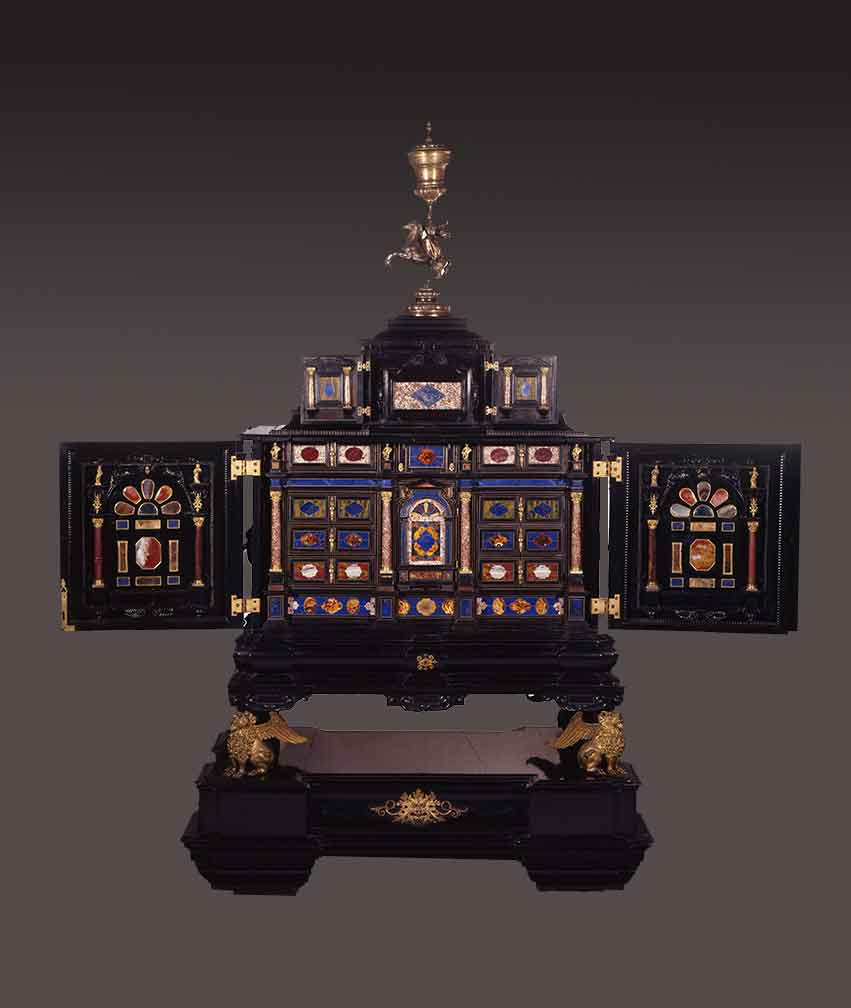Cabinet
Rome , mid-17th century and 19th century
Description

This ebony cabinet inlayed with semi-precious stones is one of the most famous pieces of furniture in the Museum. With its many drawers and doors, it resembles the type of cabinets of Dutch origin very popular in Italy from the mid-16th century onwards. The inlay, once attributed to a Tuscan workshop, was made in Rome, where polished stones were typically arranged in a geometrical pattern.
Those decorating the central small drawers are especially precious, while the doors have been altered as evident from the different quality of the semiprecious stones adorning them.
Acquired before 1849, the cabinet was heavily altered by Giuseppe Speluzzi. In 1859 he added the ebony base with gilt bronze winged lions. In 1881 he crowned the cabinet with a 18th century German silver goblet with a woman riding a unicorn, made by Johannes Biller (1696-1745), from a family of goldsmiths working in Augsburg in the 17th and in the 18th centuries.
Data Sheet
Author
Rome
Date
mid-17th century and 19th century
Material and technique
Ebony; jasper; agate; lapis lazuli; gilded bronze; silver
Measures
147 cm x 121 cm x 83 cm
Acquisition
Gian Giacomo Poldi Pezzoli bequest, 1879
Inventory number
1128
location
Black Room
The Black Room is one of the Museum’s historic rooms, originally the living room of Gian Giacomo Poldi Pezzoli’s apartment. Inspired by the Northern Renaissance style, evoked by the large Flemish polyptych displayed on the wall, it continued to be called Sala Nera despite the destruction of the very fine ebony panelling. Fortunately, the furniture and doors, designed by Giuseppe Bertini and made by the team of artisans Giuseppe Speluzzi, Luigi Barzaghi and Pietro Zaneletti, survived the bombing.
collection
Furniture
Gian Giacomo Poldi Pezzoli had gathered important Italian furniture: Renaissance cassoni, precious carved and inlaid cabinets, pieces decorated with semiprecious-stones, Lombard and Venetian wall mirrors. Notable are also the rich 19th century pieces of furniture designed by Giuseppe Bertini and made for Gian Giacomo’s apartment by Milanese artisans.
